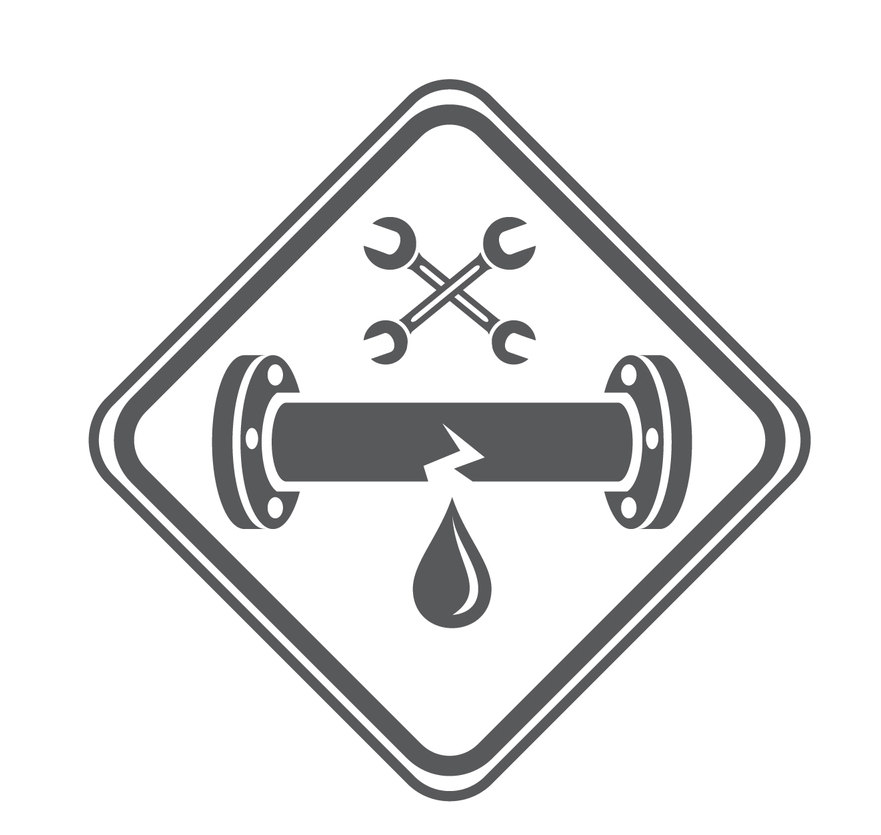
Have a water leak that’s bugging you because you can’t find it? You’re not alone. Water leak detection can be tricky. Based on data from the Alliance for Water Efficiency, the average US household looses some 5-10% of its total water usage to leaks. But it’s not just a matter of water bills and conservation. Any lingering dampness leads to mold and other water damage no matter where or how well its hidden. Today’s electronic leak detection services mean no more unnecessary holes to repair after someone’s tried to track down the source. That includes slab leaks buried beneath concrete floors.
Is There Really a Leak?
You may not be sure if you actually have a leak. Often the only clue is a jump in the monthly water bill. (By the way, the average 4-person household in the US uses around 12,000 gallons a month in indoor and outdoor uses.) To avoid water damage repairs such as replacing carpet, wood floors, and drywall, be alert to the various clues that suggest water leaks.
Listen
If there’s a big leak you might actually hear the hiss of water spraying or gurgling. Or you may notice a drop in water pressure. Both are signs of big problems requiring immediate attention. Is your toilet frequently refilling? There’s probably a leak between the tank and bowl.
Sniff
Do you smell any faint musty odor of mold? Then you probably have a plumbing or building water leak somewhere. Check the attic, any crawl space, around windows and doors, and in humid bathrooms.
Look
Toilets are often the biggest waster, but a single dripping faucet or shower can waste a thousand gallons or more per year. Also be on the lookout for signs of hidden leaks. These include damp, cold, or warm spots as well as discolored areas (water stains). Don’t forget to check inside cabinets and under sinks as well as around the water heater. Don’t forget that drain and sewer lines can also release water.
Test
You can use utility’s meter to test for water leak detection. Turn off all water users (don’t forget toilets and ice makers), then check your water meter. If the small dial is spinning you have a pretty big leak. Otherwise, write down the meter reading then wait a couple of hours with everything still turned off. If the meter has changed you have a smaller leak. There are many types of meters, so you’ll need to check your local utility’s website for info on how to open and read it.
It’s important to know that many older meters don’t register flows below about 1 pint per minute. That’s still over 300 gallons per day, so it’s possible to have a significant water leak that can’t be detected by this method.
Professionals Use Electronic Leak Detection and Location Meters
If you’re still unsure, or know you have a leak but can’t find its source, electronic leak detection services are a fast and dependable way to avoid any further property damage. Combining several different leak detection technologies often gives the best results in determining if there is indeed a problem and then pinpointing its location. But only some local plumbers, such as ASAP Drains & Plumbing, have specialists trained in their use.
Pressure Tests
Most plumbers can perform a pressure test that’s more sensitive than meter reading. After shutting off the supply as well as all uses they can measure small drops in pressure as water escapes. But that water can travel quite a distance before surfacing as dampness or other evidence, so it’s no help in locating leaks.
Acoustic Leak Detection
Electronic acoustic leak detection methods are the most widely used. For major issues an experienced plumber can just use their ears. But it usually takes more. Draining pipes then pressurizing them with air or nitrogen produces a high-frequency hiss that’s loudest at frequencies above the human range of hearing. So a special microphone and electronics detects faint sounds and translates them down in frequency. A meter read-out quantifies the sound level and aids in tracking down the spot where it’s the loudest. Acoustic instruments work well on slab leaks with pipes several inches underneath the slab foundation, but not so well for outdoor water lines buried more than a few feet deep.
Thermal Imaging
The presence of moisture changes the heat conductivity of most porous materials. Thermal imaging instruments are special digital cameras that see in the infrared (heat) spectrum. Showing differences of 0.1 deg. F (or less) they paint a picture of dampness hiding behind seemingly dry surfaces. And a hot water leak is a big red flag.
Pipe Tracing
Homes and small businesses rarely have blueprints showing where plumbing was run. By attaching a special RF (radio frequency) transmitter to a pipe and using a small receiver plumbers can trace the location of pipes and in turn the likely location of leaks. But this doesn’t work for plastic pipes or deeply buried pipes.


